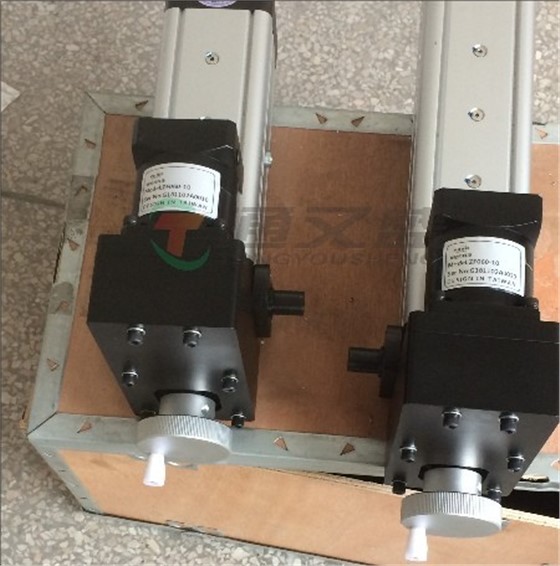In today's era, the new energy industry is developing in full swing, reshaping the global energy landscape with an irresistible momentum. From new energy vehicles seen everywhere on the streets, to wind farms standing in the vast land, and to neatly arranged solar photovoltaic power stations shining with technological light, new energy is everywhere, profoundly changing our lives and leading humanity towards a more green and sustainable future.
In the new energy field, many devices need to operate in outdoor environments, such as solar photovoltaic power stations and wind farms. These outdoor environments are often very complex and harsh, with frequent extreme weather conditions such as high temperatures, low temperatures, dust, and heavy rain, which pose huge challenges to the stable operation of equipment.

High-temperature resistant electric cylinders have become reliable partners to ensure the stable operation of these outdoor new energy equipment, thanks to their excellent high and low temperature resistance and advanced sealing design.
In high-temperature environments, ordinary mechanical equipment may fail due to problems such as component expansion and reduced lubrication performance, affecting the normal operation of the equipment. However, high-temperature resistant electric cylinders use special high-temperature resistant materials and heat dissipation designs, which can still maintain stable working conditions in an ambient temperature of up to 80°C, ensuring the normal operation of equipment.
For example, in some large solar photovoltaic power stations in western China, the summer temperature often reaches above 40°C, and even exceeds 50°C in some areas. In such high-temperature environments, as a key component of the photovoltaic panel tracking system, the high-temperature resistant electric cylinder can accurately control the angle of the photovoltaic panels, keeping them in the optimal power generation state at all times, providing strong support for the efficient power generation of the power station.


